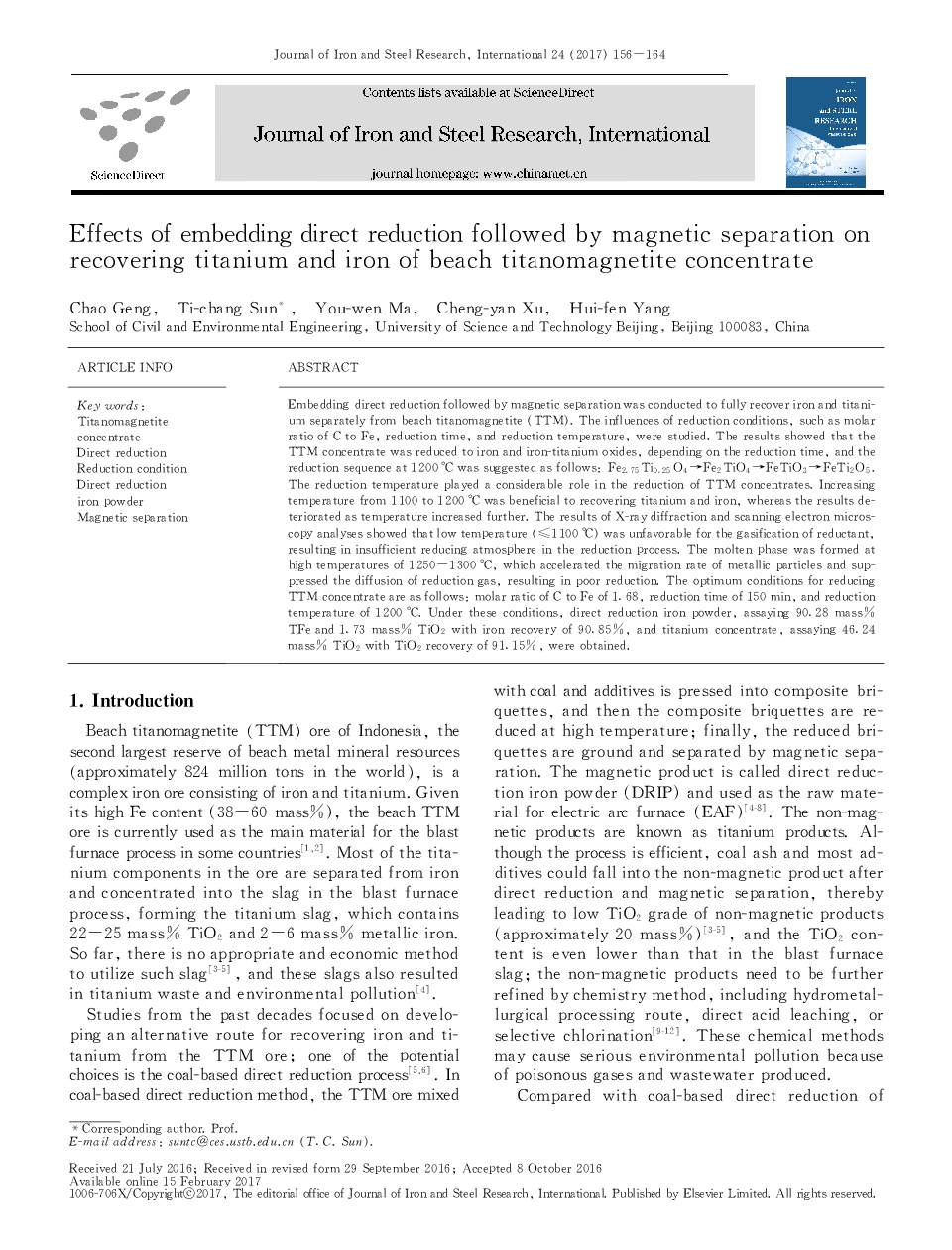| Article ID | Journal | Published Year | Pages | File Type |
|---|---|---|---|---|
| 8004332 | Journal of Iron and Steel Research, International | 2017 | 9 Pages |
Abstract
Embedding direct reduction followed by magnetic separation was conducted to fully recover iron and titanium separately from beach titanomagnetite (TTM). The influences of reduction conditions, such as molar ratio of C to Fe, reduction time, and reduction temperature, were studied. The results showed that the TTM concentrate was reduced to iron and iron-titanium oxides, depending on the reduction time, and the reduction sequence at 1200 °C was suggested as follows; Fe2. 75 Ti0. 25 O4âFe2 TiO4âFeTiO3âFeTi2 O5. The reduction temperature played a considerable role in the reduction of TTM concentrates. Increasing temperature from 1100 to 1200 °C was beneficial to recovering titanium and iron, whereas the results deteriorated as temperature increased further. The results of X-ray diffraction and scanning electron microscopy analyses showed that low temperature (⤠100 °C) was unfavorable for the gasification of reductant, resulting in insufficient reducing atmosphere in the reduction process. The molten phase was formed at high temperatures of 1250-1300 °C, which accelerated the migration rate of metallic particles and suppressed the diffusion of reduction gas, resulting in poor reduction. The optimum conditions for reducing TTM concentrate are as follows: molar ratio of C to Fe of 1. 68, reduction time of 150 min, and reduction temperature of 1200 C. Under these conditions, direct reduction iron powder, assaying 90. 28 mass% TFe and 1. 73 mass% TiO2 with iron recovery of 90. 85%, and titanium concentrate, assaying 46. 24 mass% TiO2 with TiO2 recovery of 91. 15%, were obtained.
Related Topics
Physical Sciences and Engineering
Materials Science
Metals and Alloys
Authors
Chao Geng, Ti-chang Sun, You-wen Ma, Cheng-yan Xu, Hui-fen Yang,
